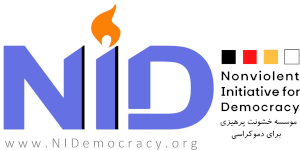The recent protests in France began after a fatal shooting of a 17-year-old youth by a police officer, sparking severe unrest and violence in several suburban areas of Paris on the night of Thursday, 29th June (7th of Tir in the Iranian calendar).
During these protests, which have been ongoing for over ten days and continue in some suburbs of Paris, hundreds of protesters have been detained, and many police officers and protesters have been injured.
On Tuesday, 27th June (6th of Tir), a police motorcycle unit in Nantes, France, stopped a car carrying three passengers and shot the driver at close range, resulting in his death. The officer involved in the incident has been arrested on charges of “intentional homicide,” and investigations are ongoing at the Ministry of the Interior.
The French police shot the 17-year-old youth because he allegedly resisted their order to stop the vehicle he was driving, which led to the injury of the pizza delivery worker. Despite efforts by medical personnel to save him, he did not survive.
The Nantes police justified the incident by claiming that the victim had a history of driving offenses and was stopped for that reason. The car also had two other passengers, one of whom is on the run, while the other was briefly detained after the fatal shooting and later released.
Family lawyers of the deceased youth stated that he had no criminal record and was never “convicted definitely.” However, according to “L’Éxpress” newspaper, the youth was “considered a criminal” in some cases, especially due to his defiance of police orders.
The current protests have seen angry people take to the streets in Paris and various other areas of its suburbs, protesting the violence perpetrated by the police in the case of the French youth’s killing and engaging in clashes with the police, resulting in the torching of many shops and public service offices. Excessive police violence during inspections has become an unacceptable issue in the public opinion of France. People are often confronted with heavy-handed and deadly responses.
Two weeks ago, another 19-year-old youth was killed in Angoulême, western France, by a shot fired by a police officer. The officer claimed that the driver had hit him with the car. France has experienced widespread civil protests and strikes, but the nature of the current protests is different from what has happened before.
Media, experts, and even French officials refer to the 2005 protests, which were triggered by the killing of two youths and led to symbolic protests in the suburbs of France. These protests, often sparked by protest against police violence or government authorities in poor neighborhoods, are known as the “Suburban Riots.”
These neighborhoods, with a large population of teenagers and young people, suffer from high rates of unemployment and drug trafficking. The victory of Macron in the 2017 elections was seen as a response to the rise of far-right parties in Europe due to the Syrian refugee crisis.
The conflict in Ukraine further fueled right-wing extremism in Europe. Earlier this year, in response to the “reforms in the French pension law,” nationwide protests took place. Those protests were civil and non-violent, although reports of police pressure to disperse crowds were published.
However, what is evident in this situation is the unbreakable link between the production of violence and its reproduction by the government and the people in various societies. People in different communities view military and security forces as obligated to maintain order by adhering to the law, and they do not tolerate the violence perpetrated by the police. Where suspicions of governments’ illegal support for the police arise, people respond to this lawlessness and violence by reproducing it on the streets.



